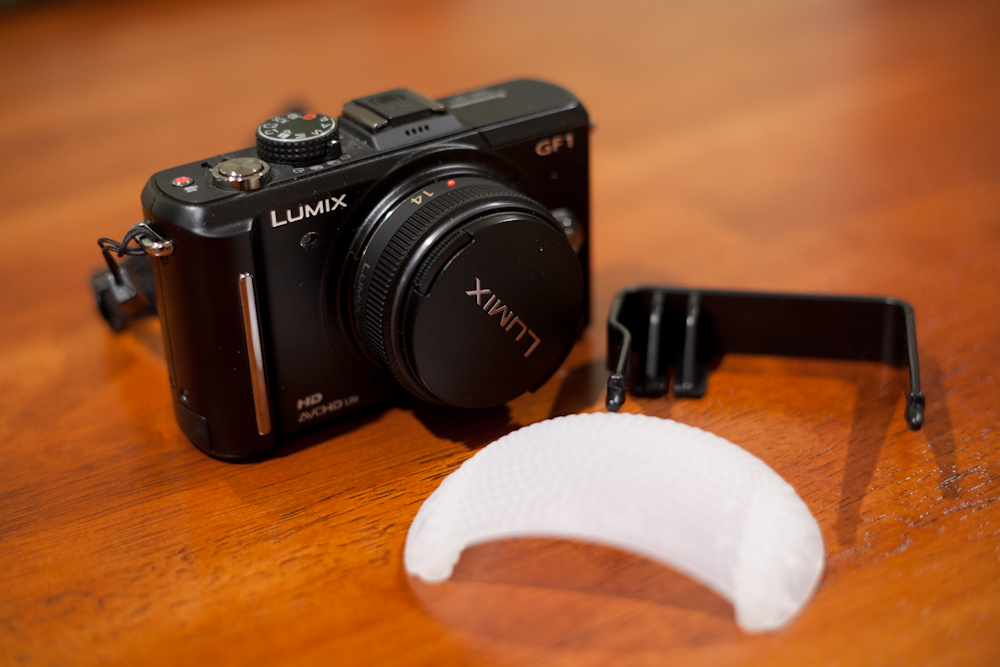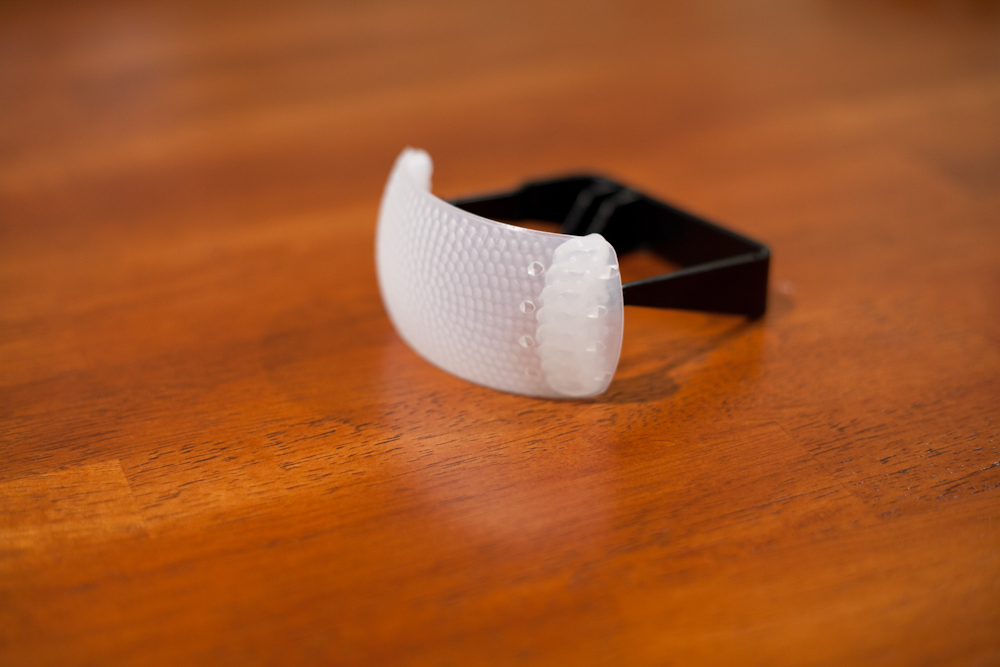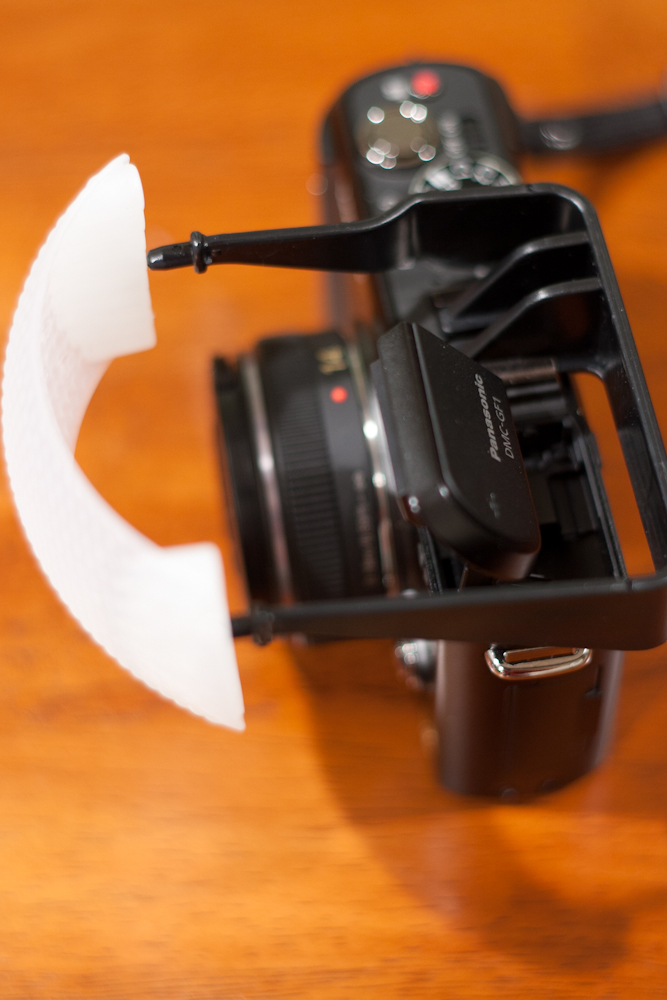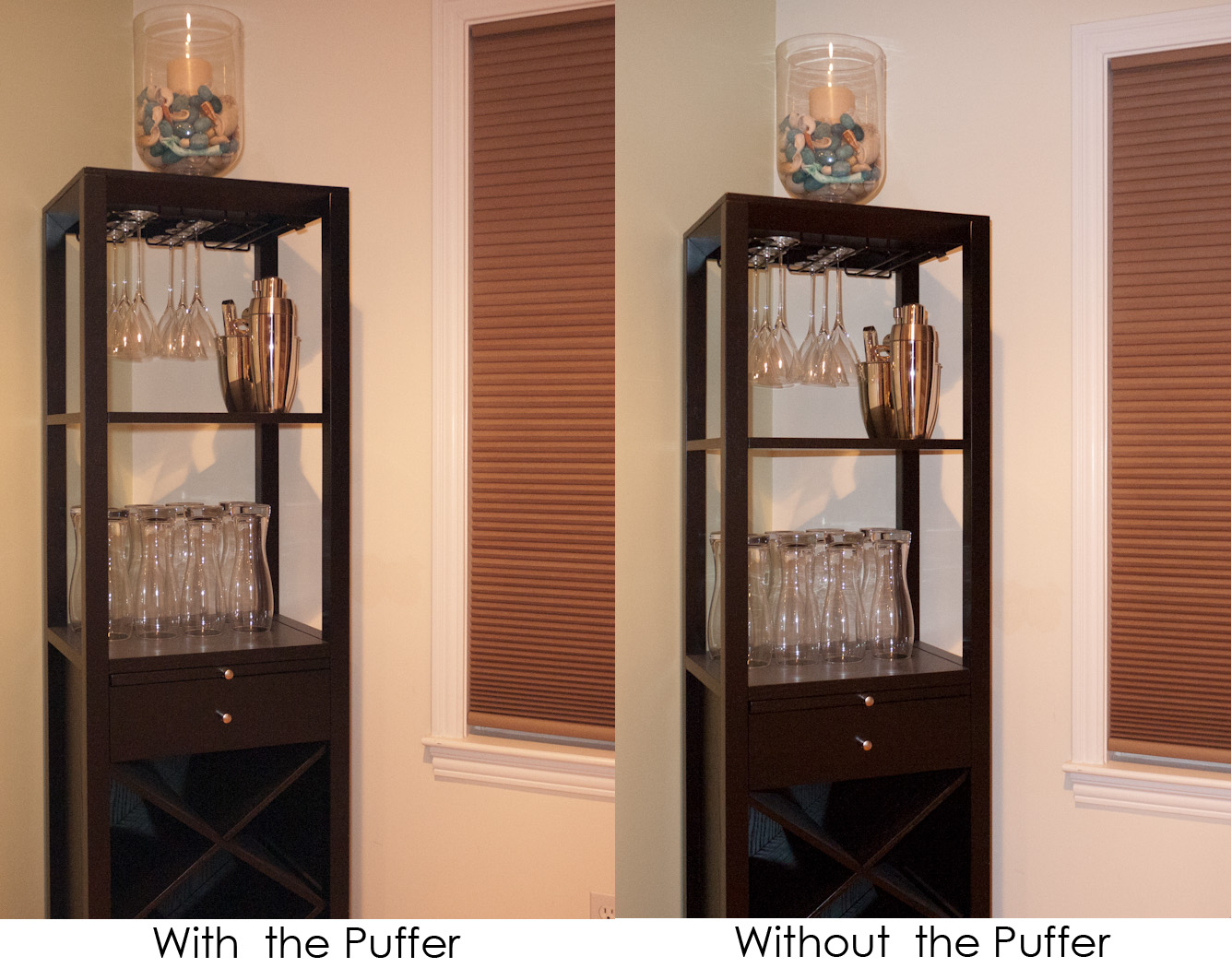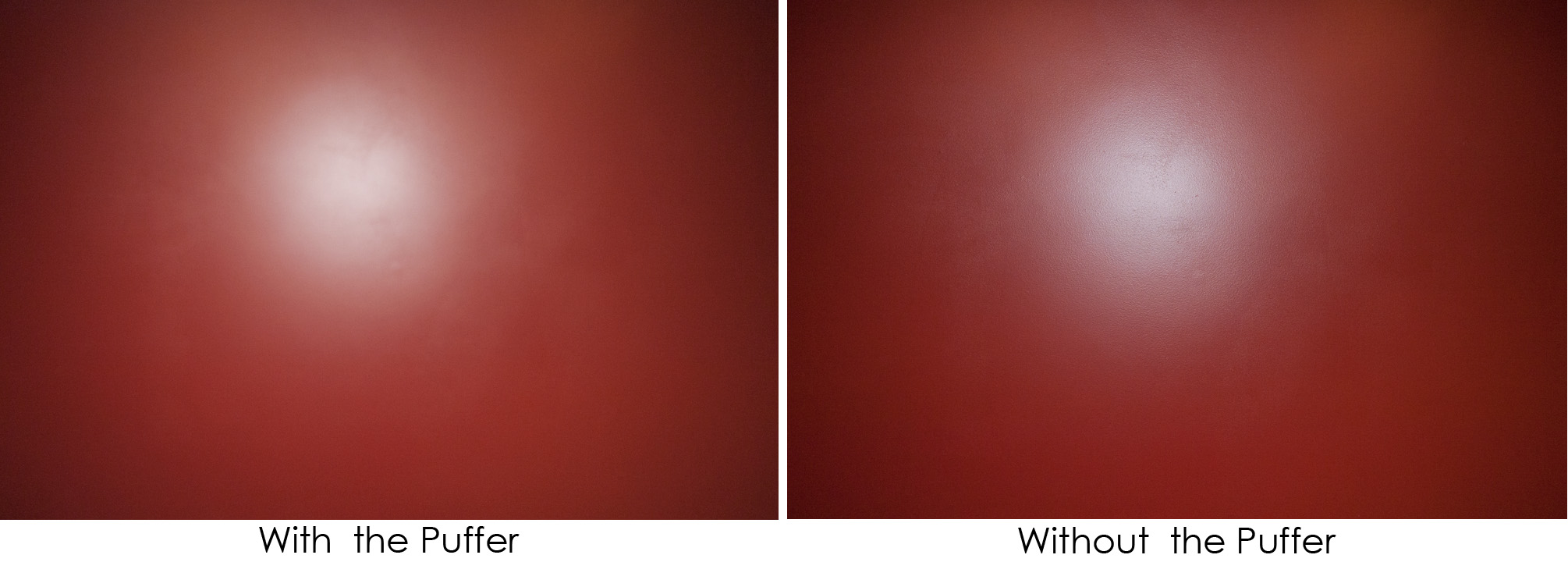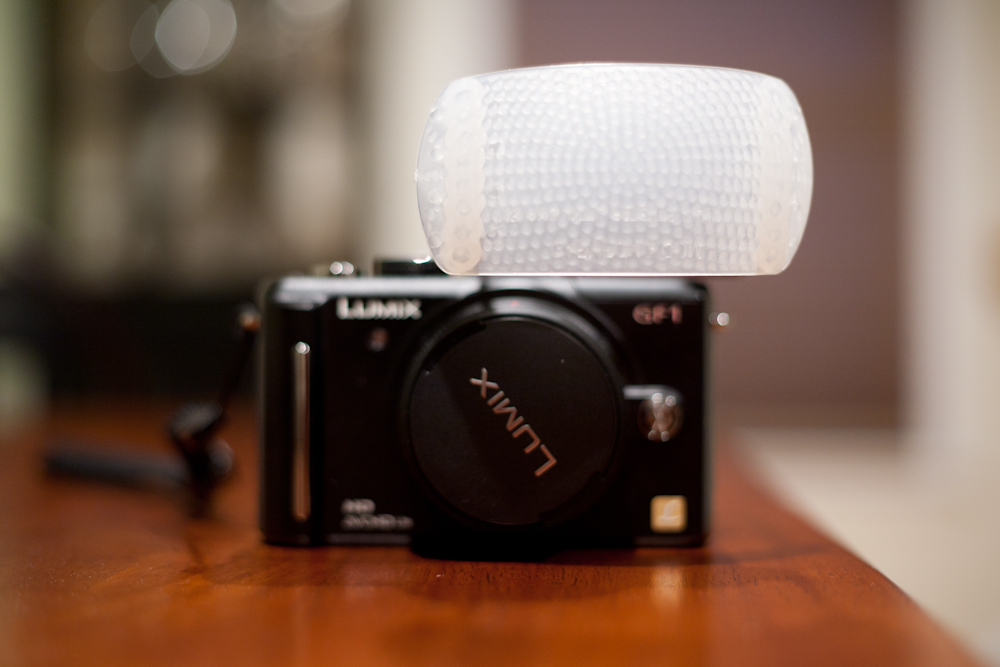Like most point and shoot cameras, the built in flash in the Olympus PEN and the Panasonic GF series leaves something to be desired. I own a GF-1 and I can count on one hand the amount of times I’ve used the built in flash…and I would have a few fingers to spare. Small built-in flashes are too close to the lens and usually produce harsh light that is anything but flattering to most subjects. Well, Gary Fong thinks he has a solution for you Micro Four Thirds (M43) users and it’s called the Micro Four Thirds Puffer. We did a review on this previously for Nikon cameras.
What’s Included
I have a press unit so I don’t get all of the normal packaging goodies but what I do have is a black bracket, a white diffuser and that’s about it. Nice and simple. The black bracket has a square tab which is used to mount the puffer to your M43 camera via the hot shoe. The actual diffuser part is a large curved piece of plastic that has a golf ball type texture to the surface.
Hands On
Upon opening the package, my first thought was this thing is MUCH bigger than I had anticipated. Compared to most DSLRs, the GF-1 is a pretty compact package which is probably why the puffer seems so big. The bracket is about 3/4 the length of the GF-1 so it just seems large compared to the camera. As you would image, the diffuser is not very petite either. I’m assuming the diffuser had to be a specific size to be effective and therefore the bracket had to be built to accommodate the size of the diffuser. It would be nice if the entire unit was smaller as most people are going for a compact rig when they purchase a M43 camera but I guess you can’t have your cake and eat it too.
Everything is made from hard plastic that seems to be pretty rugged. I’m not afraid of breaking anything when I’m attaching the unit to or taking it off of my GF-1. The black bracket has two prongs that stick out in front of the camera when mounted in the camera’s hot shoe. At the end of these prongs are two mounting pins that go into the back of the diffuser. The nice thing about the diffuser is it has several different mounting points (see above picture) which allows the user to place the diffuser at the optimal height for their camera and flash.
Nice touch Gary.
Results
All images where taken with a Panasonic GF-1 and Panasonic 14mm F/2.5 pancake lens. Results may vary with the body or lens you are using, this is simply my experience when using the Puffer with this setup.
To get straight to the point, I wasn’t that impressed with the Puffer. I tried setting the diffuser to different heights but it didn’t seem to alter the results. The Puffer does soften-up and even-out the light from the flash but the results are not what I would call dramatic or impressive. The Puffer did however seem to create a few issues with my GF-1. There were a few image quality issues that kept appearing in several of my images. Look at the images below. The one on the left looks to have a white haze cast over the image and there seems to be a loss in detail as well.
Another issue that kept popping up was white balance shifts. The GF-1 has ROCK SOLID auto white balance. I’ve never used another camera (P&S, M43, DSLR) that has a more accurate auto white balance. However, several shots taken with the Puffer attached resulted in images that were much warmer than the same shot taken without the putter. I thought this was strange as the puffer is just a translucent piece of plastic but you can’t argue with the results.
The images below were taken in a very dark room against a dark wall. I wanted to see if I could see an actual difference in the flash output between the standard flash and the flash with the Puffer. The flash pattern seems to be slightly more dispersed with the Puffer but again you see that white color cast and a loss of detail. Not cool.
Conclusion
As most photographers know, Gary Fong makes some pretty killer light modifiers, but sadly I wouldn’t classify the Puffer as one of them. Again, I only have a GF-1 with the 14mm lens. You may get better results with a Panasonic GF-2, Olympus E-PL1/E-PL2, or even the GF-1 with a different lens…but I wouldn’t count on it.
Even if the Puffer did provide amazing results, there is one glaring issue with this device…it’s size. When I opt to take my GF-1 over my Canon 5D, I want to travel light and with as little gear as possible. I usually stick the GF-1 in a jacket pocket or a very slim case like the Black Rapid SnapR. The Puffer is just another piece of equipment to carry around. If they could improve the performance and somehow make the mount collapsible or make the entire unit smaller, then maybe I would consider bringing this along when I knew I would be using the flash.
One other thing to note is the Olympus E-PL1 and E-PL2 along with Panasonic’s GF-2 have a slick pop up flash that can be moved with your finger while it is in the firing position. This allows you to bounce the light off of the ceiling when needed. The results you get using this technique may produce better results than a diffuser could. As I stated before, I’m still using the GF-1 so I could not do a comparison.
Honestly, if I was truly concerned about getting better flash production from my GF-1 and I wanted to carry around extra gear, I would use the hot shoe for what it was intended for…an external flash. Yes, external flashes are more expensive than the Puffer but the results are going to be MUCH better. Plus, external flashes are more powerful, you can bounce them and you have much more control over their output.
For now, I’m going to pass on the Puffer. I would rather take a little harsh light over the white color cast, loss of detail and WB issues.
Please Support The Phoblographer
We love to bring you guys the latest and greatest news and gear related stuff. However, we can’t keep doing that unless we have your continued support. If you would like to purchase any of the items mentioned, please do so by clicking our links first and then purchasing the items as we then get a small portion of the sale to help run the website.


